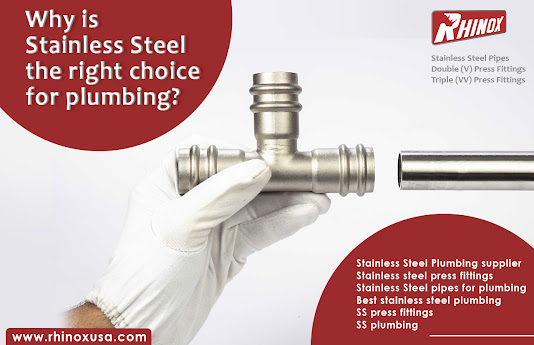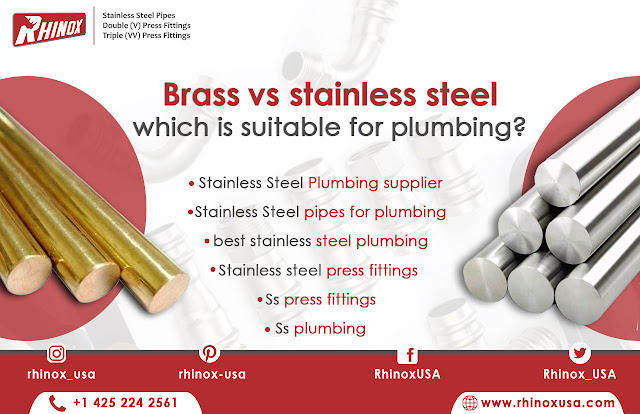Myths about stainless steel piping products
In more conventional plumbing applications, stainless steel pipe fittings clamps, and other products are gaining popularity. Due to its affordable price, stainless steel is a viable alternative to other products. As a result, Contractors recognize the value of stainless as it is corrosion-resistant and cheaper than other materials such as lead-free brass.
The Stainless Steel Products
industry is prone to many misconceptions. We must address these issues now
because they negatively impact marketplace education.
·
Stainless Steel's magnetic properties determine its quality.
It is a highly prevalent
misconception. Because austenitic stainless steel plumbing is in their
pre-worked state non-magnetic, there is a great deal of confusion on the topic.
The stainless steel will become magnetic after being cold worked in the
manufacturing process, regardless of its quality and alloy specification.
Despite a widespread myth, the
magnetic property of stainless steel doesn't indicate its ability to resist
corrosion. It is vital to recognize that lower grade stainless steels, such as
the 200 series, will not have the same magnetic attraction as more
corrosion-resistant stainless steels, such as the 300 series. Steels such as
301 are more corrosion resistant, although they turn magnetic when cold worked.
Stainless steel suppliers, for instance, could exhibit different degrees of
magnetic attraction. You can only truly inspect the quality with an alloy
analyzer. By doing this, we will be able to determine what the alloy is
composed of, its chemical composition, and its quality.
- The
seals of stainless steel pipe fittings are the same as other material
Stainless steel is often
criticized for its inability to seal well, or for being difficult to work with.
People encounter this problem mainly because they are unaware that stainless
steel has to be sealed differently than brass, for example.
The reason that the seal needs
to be different is because of how hard the material is. Standard PTFE tape can
be damaged by stainless threads, which could result in the tape being cut. As a
result, the fitting and pipe can be fused, making it difficult to separate and
preventing good sealing.
stainless steel plumbing should be done with a tape containing nickel. When tightened, the nickel provides strength to the tape. In this way, you should be able to create a perfect seal, and you'll be able to remove the threads if you need to.
- All
Stainless Steel Fittings are the same
It is important to know the
specifications of various stainless steels to determine the type of stainless
steel that is best for a particular application.Plumbing industry stainless
steel comes in two grades: 304 and 316. Based on their chemical composition,
these numbers represent each element. They differ primarily in corrosion
resistance. A 316 Stainless Steel fitting is much more corrosion resistant than
aluminum and can be used in industries, commercial applications, and so forth.
In the context of more "every day" plumbing, 304 is conventional
stainless steel. The corrosion resistance of 304 is still much higher than that
of other materials like brass or galvanized.
It is also important to pay
attention to the pattern or thickness of the fitting. You are likely to see
five different patterns. Each of these will have a different pressure rating.
It is obvious that the thicker the pattern, the higher the pressure rating will
be.
Conclusion
There are differences among stainless steel pipe fittings. You should be aware of the varied configurations. We can help you decide which option is right for you by consulting a professional at Rhinox.




Comments
Post a Comment